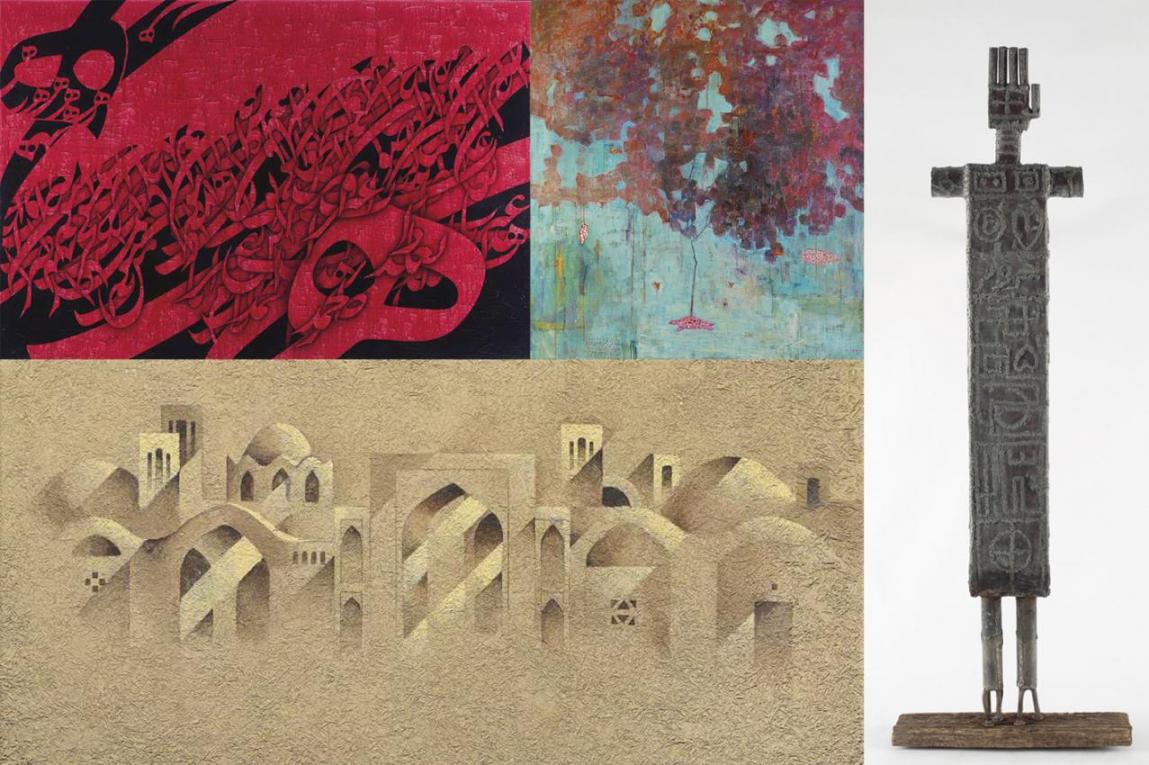It’s neither new nor surprising. For quite some time now works by Iranian artists are fetching exorbitant bids in prestigious international auctions and higher records are set every year.
Perhaps the very reason why this year’s 17th consecutive art sale at Christie’s Dubai, didn’t stir up as much excitement in Iran as it used to, with shares going mostly to owners, not necessarily artists themselves, like works of Iranian artists in the previous years; sometimes sold for prices three times higher than what was estimated, Tejarat-e Farda reported.
Among the 121 lots in the sale, 19 new records were set and works by the Lebanese Shafic Abboud and Iranians Bahman Mohassess and Koorosh Shishegaran were among the record breakers.
Given the context in which works by renowned artists such as the Egyptian Mahmoud Sa’id, Hamed Ewais, Syrians Fateh Moudarres and Louay Kayyali, and the Iraqi Dia Al-Azzawi were presented, the sale brought in an overall $12 million, over a third of which was bid on Iranian art. Statistics indicate that modern and contemporary Iranian works had not been bought for prices as high since 2010.
Works by several other Iranian artists were presented namely those of Parviz Tanavoli, Sohrab Sepehri, Hossein Zenderoudi, Marcos Grigorian, Farhad Moshiri, Leyly Matine-Daftari, Mohammad Ehsai, and Reza Derakhshani.
Notable Records
Although most of the highest sales were easy to predict, Christie’s was not completely void of surprises.
Compared to previous years, a few differences stood out, firstly: size. The presented works of prominent artists such as Moshiri, Sepehri, and Tanavoli were not as big or as worthy as works presented by the same artists in previous years.
Last year, Tanavoli’s ‘Oh Persepolis II’ did not repeat the same success which ‘Oh Persepolis’ enjoyed in 2008. Consequently, this year, works in smaller scales by Tanavoli were presented.
Aside from selling two sculptures, Tanavoli who is mostly referred to as a sculptor, also sold a painting for $365,000 (six times more than the estimated price). The artist has announced that none of the works auctioned were in his possession but were bought by American art collectors years before.
The superstar of the art world, Farhad Moshiri also set a new record. Reviewing Iran’s fine arts, Moshiri stands out as a peculiar phenomenon. Established as a staple in pop art and now one of the most expensive Iranian artists, Moshiri rarely shows up in Iran’s art circles or accepts interviews, thus not much is known about his vision towards arts. The artist doesn’t hold many exhibitions or sells much in the country, perhaps reinforcing the hypothesis that art history and the art market do not necessarily share the same points of view.
High Demand
Michael Jeha, Christie’s managing director and head of sales in Middle East, stated that this year’s sale, which was sold out 95% in value, indicates the continuing strength of the market in the region and the steady and increasing demand for top quality Iranian works.
He added that although sometimes sales are entirely unpredictable, past experience shows that Iranian works have always been and will continue to be in high demand.
Downsides
Unfavorable political situations in the Middle East, have cast their shadow on the art market as well. Relations between Iran and Arab countries have not been entirely congenial.
As buying Iranian art promotes Iran and given the troublesome relations, Arabs have become reluctant to buy expensive Iranian works.
In a situation in which Arab countries focus on expanding their own galleries and art scenes, an important question arises: how much longer can selling Iranian art work for high prices at an international level be sustained?
Arabs would show higher interest, if relations between Iran and countries in the region improve. If the trend changes accordingly, wealthy Iranian’s living abroad would also be attracted.
Privatization
What is particularly thought-worthy is that during the past years with the help of Dr. Alireza Samiazar, art historian and architect, the fine arts are now operating entirely independent from governmental funding. Privatizing the arts has clearly had several benefits, mainly, international acclaim and financial independence.
Government organizations have plenty of assets at their disposal which could be used for promoting art. According to Samiazar, however, official institutions have not significantly contributed to fine arts.
Organizations can introduce art works and provide education. Clearly, education must not be limited to colleges and universities; museums and galleries should also play a central part.
With the aid of government institutions, the Iranian art market can dynamically progress in broader spectrums.


